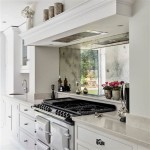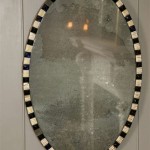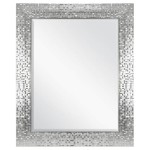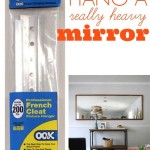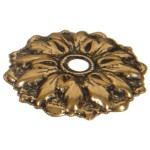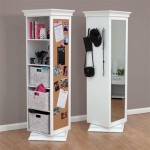How to Use Mirrors to Make a Room Look Bigger
Mirrors offer a clever and cost-effective way to enhance the perceived size of a room. By strategically placing and selecting the right types of mirrors, one can create an illusion of depth and spaciousness, transforming even the most compact areas into seemingly larger spaces. This article explores various techniques for using mirrors to maximize the sense of size in any room.
Key Considerations for Mirror Placement
Placement is crucial when using mirrors to enhance space. Careful consideration of the following points will ensure optimal results:
- Reflecting Light Sources: Positioning a mirror opposite a window or light fixture amplifies natural and artificial light, brightening the room and making it feel more open.
- Creating a Focal Point: A large mirror can serve as a captivating focal point, drawing the eye and adding a sense of grandeur to the space.
- Avoiding Reflections of Clutter: Be mindful of what the mirror reflects. Avoid positioning mirrors to reflect cluttered areas, as this can negate the intended effect of spaciousness.
Maximizing Space with Large Mirrors
Large mirrors are particularly effective in creating an illusion of depth. Their expansive reflective surfaces can visually double the size of a room. Here's how to utilize them effectively:
- Leaning Mirrors Against Walls: This creates a casual, contemporary look and avoids the need for extensive wall mounting.
- Using Floor-Length Mirrors: These maximize the reflective surface, adding height and depth to the room.
- Incorporating Mirrored Furniture: Mirrored wardrobe doors or console tables can subtly enhance the feeling of space without dominating the room.
Strategic Placement for Small Mirrors
While large mirrors make a bold statement, smaller mirrors can be equally effective when used strategically.
- Creating a Gallery Wall: Arranging a collection of smaller mirrors in varying shapes and sizes can add visual interest and expand the perceived wall space.
- Highlighting Architectural Features: Placing small mirrors near architectural details, such as alcoves or moldings, can draw attention to these features and enhance the sense of depth.
- Using Mirrored Tiles: These can be used as a backsplash in kitchens or bathrooms to reflect light and create a sense of openness in smaller areas.
Mirror Shapes and Styles for Different Rooms
The shape and style of a mirror can significantly impact its effect on a room. Consider the following:
- Round Mirrors: These soften the lines of a room and can be particularly effective in smaller spaces.
- Rectangular Mirrors: These add a classic touch and can work well in hallways or above fireplaces.
- Ornate Frames: These can enhance the decorative style of a room while also contributing to the illusion of space.
Utilizing Mirrors in Specific Rooms
Different rooms may benefit from specific mirror placement strategies:
- Living Rooms: Placing a large mirror above a fireplace or opposite a window can create a sense of grandeur and brightness.
- Dining Rooms: A mirror reflecting the dining table can create a sense of abundance and enhance the ambiance.
- Bedrooms: Floor-length mirrors are practical for dressing and also contribute to the feeling of spaciousness.
- Hallways: Narrow hallways can benefit from strategically placed mirrors to create the illusion of width.
- Bathrooms: Mirrors above vanities are essential, but adding mirrored tiles or a full-length mirror can further enhance the space.
Enhancing Natural Light with Mirrors
Mirrors are excellent tools for amplifying natural light. Consider these techniques:
- Positioning Opposite Windows: Placing a mirror directly opposite a window reflects the incoming light, brightening the room and making it feel more open.
- Using Multiple Mirrors: Strategically placing multiple mirrors can create a cascade effect, bouncing light around the room and maximizing its impact.
- Considering Window Shape and Size: The size and shape of the mirror should complement the window it reflects. A large mirror can work well with a large window, while smaller mirrors might be more suitable for smaller windows or multiple windows.
Creating Depth and Dimension
Mirrors can be used to create a sense of depth and dimension, particularly in smaller or awkwardly shaped rooms.
- Placing Mirrors at Angles: Positioning mirrors at angles can create interesting reflections and add a sense of depth to a room.
- Using Mirrored Walls: In very small spaces, a mirrored wall can dramatically enhance the perceived size, although it's important to consider the reflections carefully.
- Creating a Faux Window: A mirror placed strategically can create the illusion of a window, bringing in more "light" and a sense of the outdoors.

11 Ways To Use Mirrors Make Your Space Look Bigger

7 Ways Mirrors Can Make Any Room Look Bigger Sonoma

7 Ways Mirrors Can Make Any Room Look Bigger Sonoma

20 Creative Ways To Use Mirrors That Will Make Your Space Look Bigger

10 Ways To Make A Room Look Bigger With Mirrors Bark And Chase

How To Use Mirrors Make A Room Look Bigger

10 Ways To Make A Room Look Bigger With Mirrors Bark And Chase

Do Mirrors To Make A Room Look Bigger

11 Ways To Use Mirrors Make Your Space Look Bigger

10 Ways To Make A Room Look Bigger With Mirrors Bark And Chase

